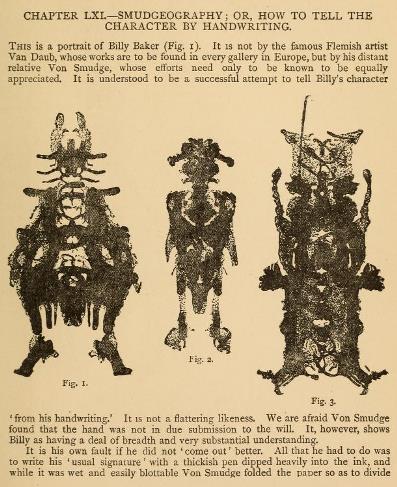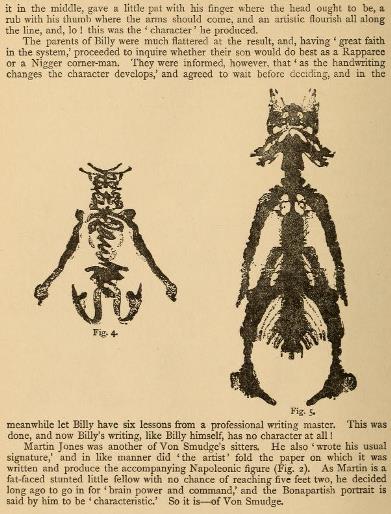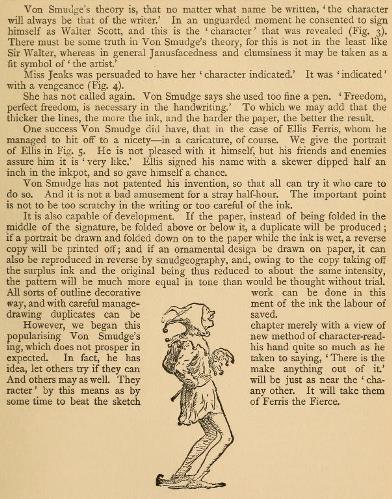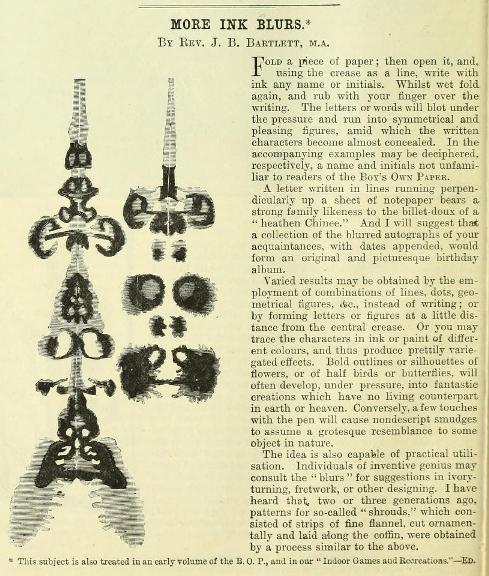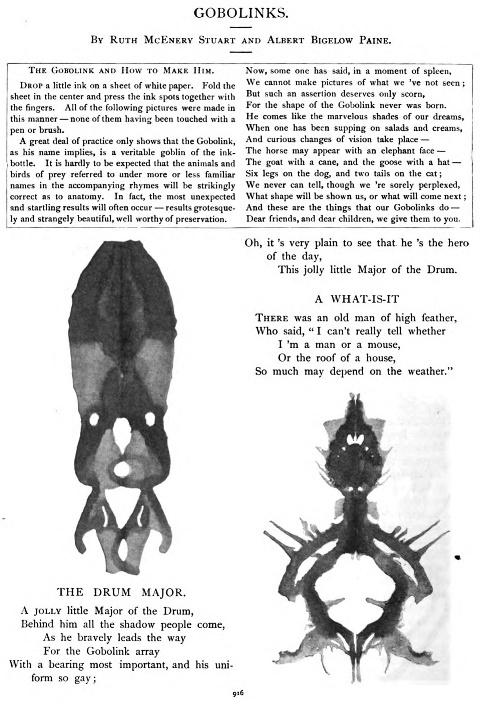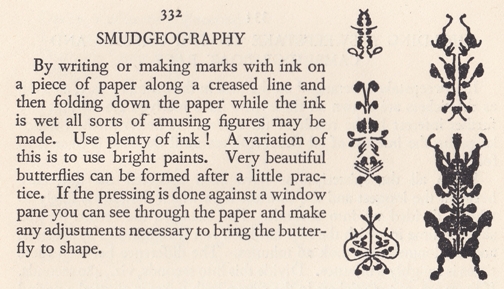| The Public Paperfolding History Project
x |
|||||||
| Symmetrical Inkblots / Klecksography / Rorschach Test | |||||||
| This
page is being used to record information about the
history of the making of symmetrical inkblots using paper
folding, a process known in German as klecksography.
Please contact me if you know any of this information is
incorrect or if you have any other information that
should be added. Thank you. ********** Symmetrical inkblots are made by pouring, dripping, splashing, splattering or painting ink or paint onto a sheet of paper, folding it in half, pressing the two halves of the paper together then opening out the fold. The ink or paint will be found to have transferred from the lower to the upper surface leaving a symmetrical pattern spread across both halves of the paper. The making of symmetrical inkblots by folding a sheet of paper in this way appears to be a folk art, and as such we do not know when or where it was first practised. ********** 1857 The first known publication of symmetrical inkblot pictures was in the book 'Klecksographien', written by Justinus Kerner in 1857, although not published until 1890, in Stuttgart, Germany, some years after his death. Each symmetrical inkblot picture in the book is accompanied by a poem inspired by the image. In his introduction Justinus Kerner mentions that he remembered from his youth creating such pictures 'by the crushing of small, coloring berries, even fly-heads, etc. on folded paper, without art, without the help of pencil and brush'. However the images in his book are of a rather more structured and contrived kind. The complete 79 page book (not counting the adverts at the end) can be viewed on-line in facsimile at http://digi.ub.uni-heidelberg.de/diglit/kerner1890/0001?sid=5374dc589b9129e466ad06306824eca4. ********** 1890 A version of the games, based on smudging signatures, appeared under the title of 'Smudgeography; Or How To Tell The Character By Handwriting' appeared in 'The Boy's Own Book of Indoor Games and Recreations', by G A Hutchinson, was published by the J B Lippincott Company in Philadelphia in 1890.
********** The Boy's Own Paper issue 612 0f 4th October 1890 contained an article entitled 'More Ink Blurs' by Rev. J. B. Bartlett.
The footnote at the bottom refers to an earlier article, hence the 'More' of the article title, but I have not yet been able to trace this. The appearance in 'Indoor Games and Recreations' is given above. ********** 1896 A second book of inkblot art and poetry, 'Gobolinks or Shadow Pictures', written by Ruth McEnery Stuart and Albert Bigelow Paine, was published in New York by Century Co in 1896. The introduction states, 'Drop a little ink on a sheet of white paper. Fold the sheet in the centre and press the ink-spots together with the fingers. All of the pictures in this book were made in this manner - none of them having been touched with a pen or brush.' Using this simple method, 'the most unexpected and startling results will often occur - results grotesquely and strangely beautiful, well worthy of preservation.' A pdf facsimile can be viewed at http://memory.loc.gov/service/rbc/rbc0001/2002/2002juv17793/2002juv17793.pdf ********** The September 1896 issue of the American children's magazine St Nicholas contained an article on Gobolinks including pictures and poems extracted from this book.
********** 1907 A third book of a similar type, entitled 'Blottentots and how to make them', written by John Prosper Carmel, was published by Paul Elder and Company of New York and San Francisco in 1907. This book can be viewed on-line at http://www.gutenberg.org/files/44898/44898-h/44898-h.htm ********** 1908 Soon after this inkblots began to be used by psychologists, most famously by Hermann Rorschach, as the basis of projective tests. In their book 'Personality Assessment in Depth: A Casebook', published in 1965, Zubin et al state that (Alfred) 'Binet applied a psychometric approach to the use of inkblot tests of the imagination (Binet and Simon 1908).' However it is not clear whether Binet's inkblots were symmetrical patterns made in the way described above or just, perhaps, random spatterings of ink on paper. As a child Hermann Rorschach was allegedly so intrigued by the making of inkblots that it is reported that his nickname was 'Klecks', German for inkblot. Rorschach went on to use various kinds of inkblots, both symmetrical and assymetrical, in his research and diagnostic work in relation to schizophrenia. According to biography.com, in 1917, 'Rorschach became aware of Swiss psychiatrist Szyman Hens's studies using inkblot cards to analyze patients' fantasies ... Rorschach combined his interests in psychoanalysis and art to create his own controversial inkblot test. He was the first researcher to use inkblots to analyze how patients projected their own associations onto seemingly random stimuli.' In 1921 Rorschach published 'Psychodiagnostik', a book which contained the famous ten cards of the Rorschach Test which each used a symmetrical inkblot pattern. Hermann Rorschach died in 1922. ********** 1932 The book 'Winter Nights Entertainments' by R M Abraham, which was first published by Constable and Constable in London in 1932, contained a small section on 'Smudgeography'.
********** |
